- Home
- Jonathan Maberry
Extinction Machine jl-5 Page 22
Extinction Machine jl-5 Read online
Page 22
I nodded. “So far I’m absolutely sold on the statistical possibility of life in the galaxy. Drake’s theory, right? Which was recently updated.”
“Wow, look at you for knowing that.”
I spread my hands. “What can I say?” What I didn’t say was that Bug told me this a couple of hours ago.
“So, science can’t take a serious stand against the possible existence of alien life or discount the possibility that we’ve been visited by aliens. That’s point one. Point two is that there have been sightings and purported visitations throughout recorded history, and in virtually all world cultures. With me so far?”
“Yup.”
“Point three, there are instances of radical leaps forward in human development, particularly in certain fields of science that are not yet explainable.”
“The building of the pyramids,” I ventured.
“Are you trying to be the teacher’s pet?”
I said nothing. Was that a flirtatious twinkle in her eye when she said that?
“Point four. It is reasonable to postulate that nothing lasts forever, or to put it another way, everything breaks down. From plant life ending its life cycle to suns burning out. Manufactured items that are heavily used tend to ultimately break down because of that hard use. Point five is that vehicles built to cross the gulfs of space qualify as items being heavily used. We can expect that the demands of such travel might wear them out.”
“You’re building a case for crashes,” I said.
“Exactly. If you look at the great exploration fleets of human history, you see that a percentage of all long-range fleets fail. That’s true from the Phoenicians to Columbus to the NASA shuttle program. Friction, vibration, material fatigue, temperature changes, intended and unintended impacts, and other phenomena will degrade the internal and external integrity of any craft.”
“Still with you,” I said. “But if these craft crashed on earth and we’ve salvaged the wreckage, why don’t we have a fleet of saucers … er, triangle ship thingies?”
“Ah, that’s the right question and you get your first gold star.”
I tried not to preen.
Junie said, “Let’s look at it from the perspective of the target culture. If a wrecked Phoenician ship washed up on the shores of the Hudson River a couple of thousand years ago, how long would it take the Iroquois Indians to repair it and sail it?”
“Ah,” I said. “But we’re more educated than the Indians.”
“We’re more technologically advanced. The Iroquois were very smart — for their time and their place in their own history. Don’t forget that the United States Constitution was based in part on the Iroquois system of government. However, they lived in a resource-rich environment that did not require the development of certain technologies.”
“They didn’t even have the wheel.”
“They didn’t need the wheel,” she amended. “Now, spin that around, crash a World War II German Messerschmitt in Galileo’s backyard. Or Newton’s. These were clearly very smart men. Could they have repaired and flown that plane? What about a Los Angeles — class nuclear sub found damaged and drifting off the coast of Japan in, say, 1938. Or even Russia in 1944. They even had a fledging nuclear program by then. Could they have repaired it? Refloated it? Driven it?”
I sighed. “We can’t fix the crashed UFOs because we’re not smart enough.”
“Oooh, and he loses his hard-won gold star.”
“Wait — how?” I demanded.
“It isn’t about being smart, Joe. Look how smart Ben Franklin was. And Da Vinci. Yet they would be flummoxed by any fifth-grader’s entry in a school science fair.”
“Not if it was explained to them,” I said. “They could grasp the concept.”
“If someone was there to explain the concept. And if they spoke the same language and used the idiomatic references particular to that era and location. What if that fifth-grader was from one of the regions of China where only five hundred people speak their dialect? The cultural differences would significantly decrease the likelihood of a meaningful exchange. Now step back and expand that communication gap. A theoretical physicist, born and raised in an affluent family in New England working at the Large Hadron Collider to a member from a Amazonian tribe whose people have never before held a conversation with an outsider. That tribesman may be the leader of his people, a shaman whose understanding of healing might be the result of ten thousand years of word-of-mouth training, and it might involve plants and compounds found nowhere else on earth. Tell me, Joe, where is the basis for understanding? How long before that tribesman can calibrate that collider?”
“You think the gap is that wide?”
She laughed. “I think the gap is about a million miles wider, and this is not a two-way conversation. The aliens are not guiding us through this step by step.”
“Surely we’re starting from a more viable point than a guy whose culture hasn’t invented any machines. If a Roman chariot-maker found a bicycle wheel he might eventually make a breakthrough in his understanding of materials, design, and other areas. That’s basic human reasoning. What if he found an antigrav hoverboard, like the ones in Back to the Future? There’s no design corollary in his experience, none in any culture he would have exposure to even though Rome was the center of the civilized world. The item would sit there, maybe for centuries or even thousands of years before someone figured out how it works.
“Is that what’s happening now?”
“To a degree” she said. “We’ve recovered so much from the crashed vehicles, and some of it we’ve been able to figure out. Basic things like chairs, control panels, stabilizers. Mostly stuff that’s pure mechanics. However the deep science has been a lot more elusive because it doesn’t fit any of the design philosophies we understand. Even when we reassemble some of the parts, we can only guess what the result is or does.”
She bent forward and rested her elbows on her knees.
“Joe … tell me the truth,” she said. “Is all of this just nonsense to you, or do you believe?”
“I don’t know,” I said. “I started the day with a hangover and a belief that we were alone in the universe. Since then a lot of very bad things have happened and most of them seem to be tied to a book I never heard of that’s supposed to be filled with information about alien spacecraft. Maybe I’m inching my way toward believing, but right now I think I’m too scared and too confused to know what to believe.”
Her eyes searched mine. “You’re telling the truth.”
“Yes,” I said, “I am.”
We sat there, looking into each other’s eyes for almost a minute. The room grew quiet around us. Ghost looked from me to her to me, as if he was watching a Ping-Pong match, or following a conversation, but we weren’t saying anything.
Before I could open a new doorway into the conversation, my cell rang again. Church.
I excused myself and stepped outside to stand among the flowers while I took the call.
“Tell me this isn’t more bad news,” I said.
Church said, “How often do I call you because I enjoy small talk?”
I sighed. “Okay … hit me.”
“We received another video. Like the first it came from an untraceable source. And, like the first one, it shows the president,” he said.
“What’s the message this time?”
“Are you alone?”
“Yes.”
“Then I’ll send the video. In the meantime, what is the sit-rep there?”
“Miss Flynn is being cooperative. We can do the conference call as soon as you’re ready.”
“Watch the video first.”
Church disconnected but my screen display told me I’d received a video. I plugged in an earphone so I could watch it silently.
It opened on a tight shot of the president’s face, then pulled back to show him sitting on a nondescript chair against a blank wall. There was a small table placed between them on which was a small black box.
The president said, “You must find the Majestic Black Book.”
The image abruptly changed and the screen was filled with an image that was frighteningly familiar. A circle divided into concentric rings and sections. The diagram of pi. It was the same image that had been stamped onto the White House lawn, but it was not a picture of the lawn. This was a precisely drawn image, possibly a computer graphic.
“You must find the Majestic Black Book.”
Blank faces, toneless voices. Then the president half turned and pressed a button on the top of the black box. Red numbers appeared on the face of the box. The display read 4320:00. Then the numbers changed.
4319:59
4319:58
A countdown. Seventy-two hours. Four thousand and twenty minutes, ticking away with silent, inevitable precision.
Simple.
Eloquent.
Terrifying.
“Holy shit,” I said. Around me there were beautiful wildflowers and a sky bright with clean sunshine. The Chesapeake was blue perfection and the air was as clean as any I’d ever breathed.
But there was nothing right about any of it.
4319:51
Then a series of numbers ran across the bottom of the screen. I recognized the pattern. A radio frequency restricted for military use. The one we use for the most severe catastrophic events.
It was a very clear message. Get the book, broadcast the fact on that frequency … and keep a billion people from dying.
Clear. Simple.
Good Christ.
I hurried back inside.
Chapter Fifty-one
The Taiwan Strait, South China Sea
Sunday, October 20, 10:22 a.m. eastern standard time
The Seventh American Fleet was spread out across the dark waters of the Taiwan Strait. Thirty-eight of its sixty ships were moving into position, carrying with them more than half of the fleet’s sixty thousand men and three hundred and fifty aircraft. Even without the rest of the fleet, this was a show of sea power that could conquer most nations on Earth. Some of the ships possessed the potential for more destructive power than all the bombs used in World War II, and that did not include the missiles with nuclear warheads.
Miles away, China sprawled, vast and powerful, secure in its personal power. Or, so it wanted the world to believe. Most of the civilian world believed that the Chinese military machine was only a half step behind America’s, but that was a by-product of China’s disinformation and misinformation campaigns. Whereas they could put a far larger army on the ground than anything America could hope to match, every military strategist in the world knew that such a ground battle would never be fought. Not directly. Not without intermediaries like the Koreans, the Vietnamese …
The real fight, if it ever came to it, would be with sea and air power.
The Seventh Fleet did not have an equal in China.
Not yet.
China had two aircraft carriers to America’s eleven. Twenty-one destroyers to America’s fifty. A defense budget of sixty billion compared with the U.S. commitment of over five hundred billion. The only area where they were nearly on a par was in the number of submarines. China claimed sixty-eight and America admitted to seventy-five.
This is what the generals and the admirals knew. This is what the chairman of the Joint Chiefs of Staff knew every bit as well as the chief of PLA General Staff.
Knowing this, seeing the demonstration of potentially overwhelming force riding the waves within fist strike of mainland China, it would be stupidity or madness or naïveté to put fighters in the air.
Philosophers have long suggested that all men are fools. Not all the time, but often enough. Else why would wars ever start?
The Shenyang J-15 is a carrier-based jet fighter aircraft based on the Russian-designed Sukhoi Su-33. Twenty of them crouched on the deck of the ROCS Hu Yaobang, the second of Chinese domestically built aircraft carriers. The jets were all primed, the pilots on deck, the flight and deck crews ready.
No one is certain — or will admit — who gave approval for Pilot Deng to climb into the cockpit of his J-15, belt in, fire up the engines, and launch his craft. No one on the deck crew tried to stop the action. It was as if they were all complicit, although in interviews following the incident, each man claimed to have received orders. They could not, however, remember who gave those orders, and there was no entry in any log that authorized the launch.
And yet Deng’s J-15 leaped into the air and drove toward the Seventh Fleet.
Within minutes a swarm of Boeing F/A-18E/F Super Hornets had been scrambled and they screamed out to meet the J-15.
Although these two jet types had never before been pitted against one another in real combat, analysts theorized that the J-15 had superior aerodynamic capabilities to all other known fighter aircraft with the possible exception of the F-22. It had 10 percent greater thrust to weight ration and a 25 percent lower wing loading than the Super Hornets. In a one-to-one contest, it should have been a turkey shoot for the Chinese fighter.
But there was only one of them in the air, and five of the Hornets.
The J-15 picked the fight, everyone was clear on that. It flew straight at the Hornets, playing a crazy game of chicken, thrusters punching it to Mach 1 for no sane reason. The Hornets spread apart to let the fighter pass, but then they rolled and turned and followed because the Chinese pilot was still moving forward toward the fleet. Toward the lead carrier.
The game of chicken became a chase.
Politicians will argue for years over who fired the first shot. It is not even clear what Pilot Deng’s intentions were. To buzz the tower on the carrier? To make a statement? To provoke a first shot?
Or to attack the carrier with missiles and a death run.
All calls went unanswered. Calls to the plane, calls to the Chinese carrier.
The gap between the J-15 and the fleet was decreasing at incredible speed. There was a stopping point, a line of sanity, where everything could have been dialed down. But that point came and went with a scream of jet engines. And then there was a second stopping point when the pursuit craft locked on to their targets and went weapons hot.
Even then, the J-15 could have peeled up and away and everyone would be able to breathe.
But that stopping point melted away.
“This is Bloodhound Five,” said the lead Hornet pilot. “I have a sweet lock on the joker.”
There was only a moment of hesitation from the carrier. “Bloodhound Five, you are cleared to fire.”
“Bloodhound Five, fox three.”
A simple code for the firing of an AIM-120D AMRAAM missile.
The missile burst from under the Hornet’s wing and drove above the choppy sea toward its target.
It was exactly halfway there when the missile exploded.
The Hornet pilot said, “What—”
“We have a missile malfunction,” said the pilot. “Bloodhound Five, fox three.”
The second AMRAAM blew up so close to the Hornet that the shock buffeted the jet into a dangerous tilt. It took every ounce of the pilot’s skill to keep from stalling.
“Missile system failure,” he bellowed. “Disengaging.”
Ahead of him, the J-15 was still closing on the carrier with the rest of the Bloodhound team in close support. The Hornets had to cut wide and change angle to keep the ships out of the line of any misfire.
Bloodhound Two and Three fired missiles.
The missiles exploded almost immediately.
Shock waves swatted the jets away and they wobbled like wounded birds, trying to regain a measure of control.
Suddenly the J-15’s angle of approach made a radical change. The pilot peeled up and away and as soon as he had a clear line of escape he hit the afterburners and scorched his way out of there. In seconds he was a dot on the horizon, heading away from the fleet.
“What the hell was that all about?”
The radar man from the carrier cut in. “Bloodhound Squadron be advised, the
re is a second bogey coming low and fast out of the—”
But the pilot of Bloodhound Five saw it before the radar man could finish his sentence. It moved in an arrow-straight line, coming back along the path the J-15 had taken, but moving many times faster.
Many times.
“Holy moly look at that mother move.”
The T-craft closed the distance from the horizon to the fleet in seconds.
“He’s clocking Mach fifteen,” cried Bloodhound Three.
But he was wrong.
The T-craft cut through the center of the fleet at Mach 20, shooting between a destroyer and a cruiser, pulling behind it an air mass that rocked both ships. It bore down on the carrier too fast for any practical reaction. There was only time to cut in the collision sirens as the gray mass of it hurtled toward a certain impact.
And then it turned.
At Mach 20, it turned.
In its own length it went from a lateral glide path to a straight vertical rise. A ninety-degree turn. It rose one thousand feet into the air and turned again.
Another ninety-degree turn. As precise as if written onto the moment with a ruler.
As thousands of men watched — through binoculars, goggles, portholes, the windscreens of jets, and with naked eyes — the T-craft became a blurred dot and then vanished.
Over mainland China.
Bloodhound Five opened his mouth to make a report, but any words he might have said died on his tongue, replaced by a single word.
“God…”
Chapter Fifty-two
Turkey Point Lighthouse, Elk Neck State Park
Cecil County, Maryland
Sunday, October 20, 10:24 a.m.
“What’s wrong?” Junie asked as I came back into the house. “God, you look like you just saw a ghost.”
“That would be a comforting break, actually.”
I sat down and poured myself some hot tea, stared into the cup, and didn’t drink any of it. Ghost, roused by what he thought was the mention of his name, whined to be petted. I ran my fingers through his fur and stared into the middle of the air, hoping that answers would appear out of nowhere.

 Flesh & Bone
Flesh & Bone The Adventure of the Greenbriar Ghost
The Adventure of the Greenbriar Ghost Whistling Past the Graveyard
Whistling Past the Graveyard Scary Out There
Scary Out There The Wolfman
The Wolfman The King of Plagues
The King of Plagues Doctor Nine
Doctor Nine Fire & Ash
Fire & Ash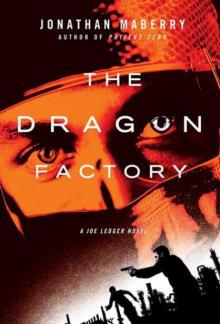 The Dragon Factory
The Dragon Factory Deadlands: Ghostwalkers
Deadlands: Ghostwalkers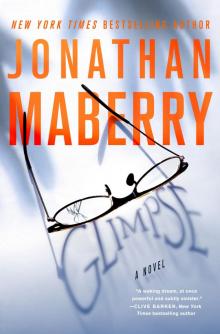 Glimpse
Glimpse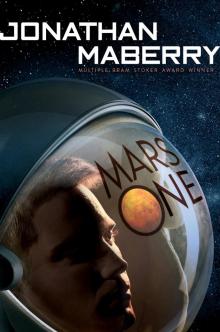 Mars One
Mars One Benny Imura 03.5: Tooth & Nail
Benny Imura 03.5: Tooth & Nail Bits & Pieces
Bits & Pieces Dust & Decay
Dust & Decay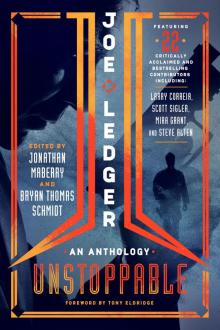 Patient Zero
Patient Zero The Orphan Army
The Orphan Army Ghost Road Blues
Ghost Road Blues Vault of Shadows
Vault of Shadows Dust and Decay
Dust and Decay Rot and Ruin
Rot and Ruin Code Zero
Code Zero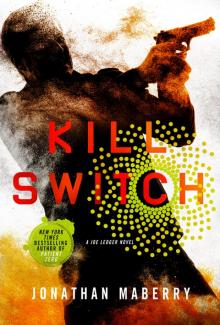 Kill Switch
Kill Switch Like Part of the Family
Like Part of the Family Flesh and Bone
Flesh and Bone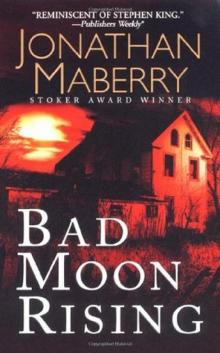 Bad Moon Rising
Bad Moon Rising V-Wars
V-Wars Dead & Gone
Dead & Gone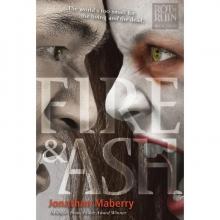 Fire and Ash
Fire and Ash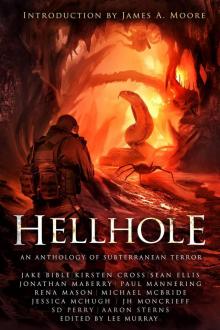 Hellhole
Hellhole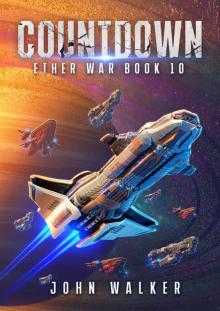 Countdown
Countdown Dogs of War
Dogs of War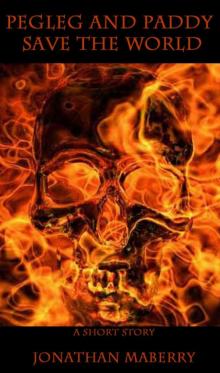 Pegleg and Paddy Save the World
Pegleg and Paddy Save the World Dead Mans Song
Dead Mans Song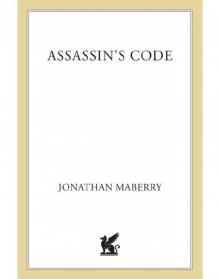 Assassin's Code
Assassin's Code Dead of Night
Dead of Night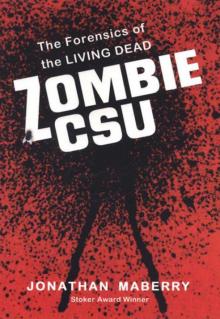 Zombie CSU
Zombie CSU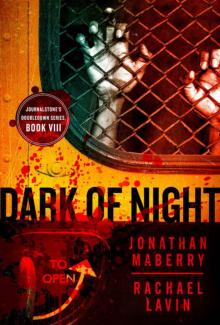 Dark of Night - Flesh and Fire
Dark of Night - Flesh and Fire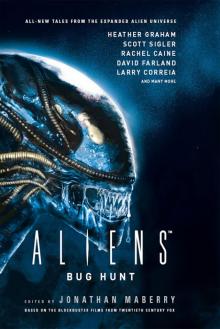 Aliens: Bug Hunt
Aliens: Bug Hunt Broken Lands
Broken Lands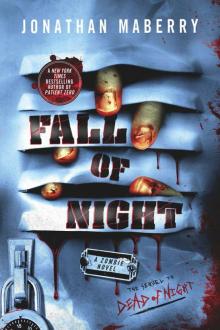 Fall of Night
Fall of Night Ink
Ink Still of Night
Still of Night Relentless
Relentless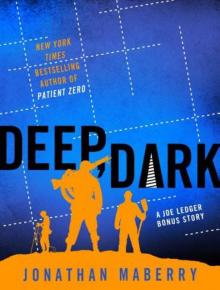 Joe Ledger 1.20 - Story to the Dragon Factory - Deep, Dark (a joe ledger novel)
Joe Ledger 1.20 - Story to the Dragon Factory - Deep, Dark (a joe ledger novel) Property Condemned (pine deep)
Property Condemned (pine deep)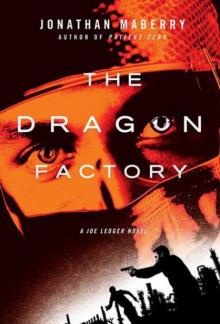 The Dragon Factory jl-2
The Dragon Factory jl-2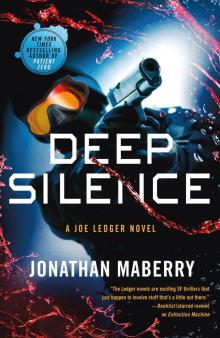 Deep Silence
Deep Silence Joe Ledger
Joe Ledger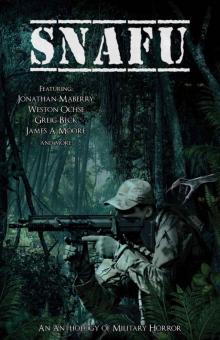 SNAFU: An Anthology of Military Horror
SNAFU: An Anthology of Military Horror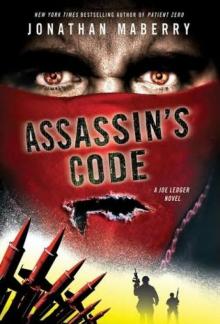 Assassin's code jl-4
Assassin's code jl-4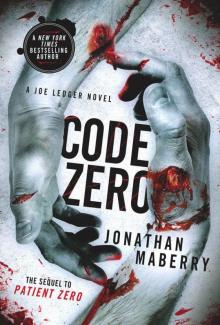 Code Zero: A Joe Ledger Novel
Code Zero: A Joe Ledger Novel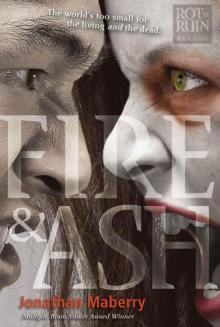 Fire & Ash bi-4
Fire & Ash bi-4 Tooth & Nail (benny imura)
Tooth & Nail (benny imura) Dead Man's Song pd-2
Dead Man's Song pd-2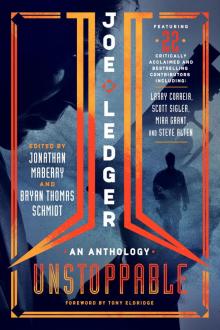 Joe Ledger: Unstoppable
Joe Ledger: Unstoppable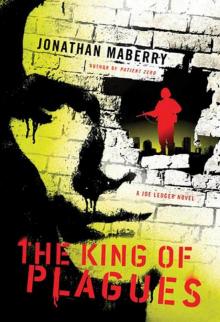 The King of Plagues jl-3
The King of Plagues jl-3 The X-Files Origins--Devil's Advocate
The X-Files Origins--Devil's Advocate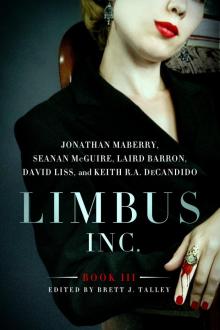 Limbus, Inc., Book III
Limbus, Inc., Book III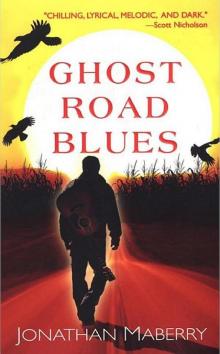 Ghost Road Blues pd-1
Ghost Road Blues pd-1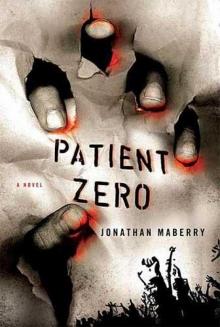 Patient Zero jl-1
Patient Zero jl-1 Death, Be Not Proud
Death, Be Not Proud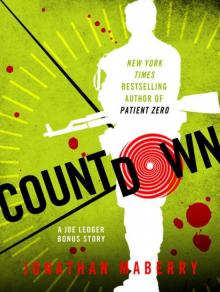 Countdown: A Joe Ledger Prequel Short Story to Patient Zero (joe ledger)
Countdown: A Joe Ledger Prequel Short Story to Patient Zero (joe ledger)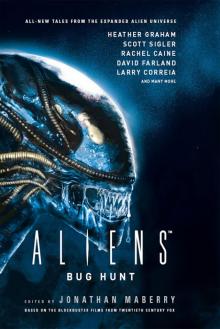 Aliens
Aliens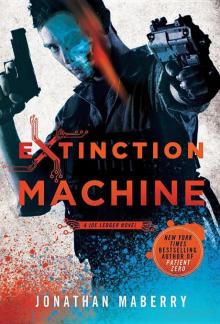 Extinction Machine jl-5
Extinction Machine jl-5 Ghostwalkers
Ghostwalkers Flesh & Bone bi-3
Flesh & Bone bi-3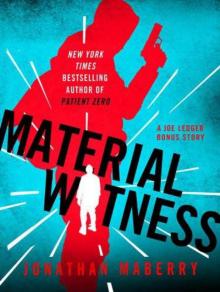 Joe Ledger 2.10 - Material Witness (a joe ledger novel)
Joe Ledger 2.10 - Material Witness (a joe ledger novel) Nights of the Living Dead
Nights of the Living Dead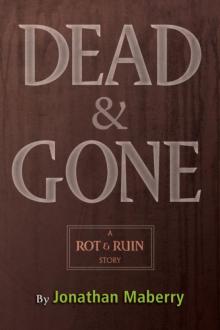 Dead & Gone (benny imura)
Dead & Gone (benny imura)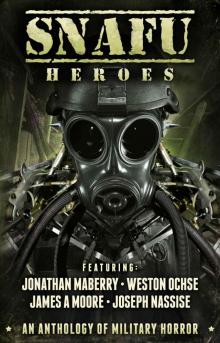 SNAFU: Heroes: An Anthology of Military Horror
SNAFU: Heroes: An Anthology of Military Horror Tooth & Nail: A Rot & Ruin Story
Tooth & Nail: A Rot & Ruin Story